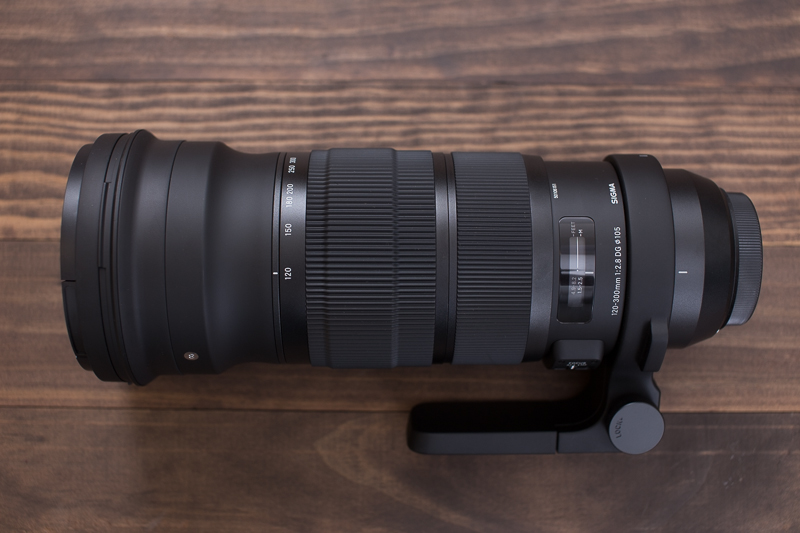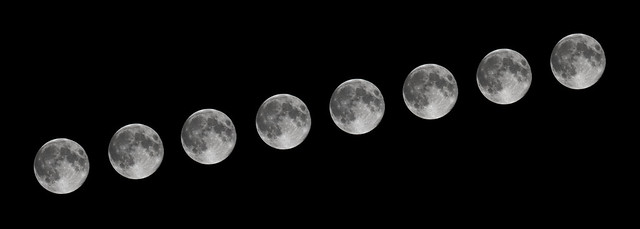
Moon photography is an interesting niche of astrophotography that can be fun and exciting to explore. Shooting the moon is simple, but it can be challenging for those new to it. Here are 5 tips for getting better images of the moon.
1. For the Best Results, Find the Best ‘Dark Sky’ You Can In Your Area

If you have ever seen a night sky picture where there is a lot of orange and gross brown colors near the horizon, then you have seen light pollution. Light pollution can really mess with any image taken of the night sky, and should be avoided if you are looking for the “cleanest” sky possible.
The only way around it is to find a location near to you with little light pollution and go there for the shoot. There are many great tools for finding dark sky near to you. I have used and like Dark Sky Finder.
2. Telephoto or Bust; The Longer Your Lens the Better

You really want to try and shoot with the longest lens available to you. Ideally for the blood moon, or any moon really, for the best results, you should be using something 300mm or longer. Anything 50mm or shorter and the moon will render really small, and it will defeat the purpose of shooting the blood moon.
3. Manual Focus, Pre Focus For Greater Accuracy
 Autofocus is notoriously unreliable in super dark conditions. While it may work just fine if you are shooting just the bright moon, if you are trying for any sort of a artistic composition, your AF can fail you.
Autofocus is notoriously unreliable in super dark conditions. While it may work just fine if you are shooting just the bright moon, if you are trying for any sort of a artistic composition, your AF can fail you.

What you want to do is manual focus, and you also want to pre-focus on the moon while it is still bright. Once the eclipse starts, the blood moon will become harder to focus on. Do it early so you can focus on other parts of shooting. Another good tip is to focus and shoot using live view.
4. Shoot Fast, The Moon Moves Faster Than You Think

Longer exposures do not mix well with shooting the moon, especially if you are taking my earlier advice and shooting with a long 300+mm lens. The moon actually moves across the sky faster than you might think. Usually anywhere from 1/30th to 1/50th of a second is usually fast enough to stop the motion of the moon, avoid anything longer than 1/10th at all costs.
5. Tripods are Key, Especially With Longer Focal Lengths
 As with shooting most things at long 300mm+ focal lengths, a sturdy tripod is key to making sure that your shot is free from camera shake. This is especially true at night where a 1/30th or 1/50th of a second exposure will very easily be ruined with even the slightest camera shake.
As with shooting most things at long 300mm+ focal lengths, a sturdy tripod is key to making sure that your shot is free from camera shake. This is especially true at night where a 1/30th or 1/50th of a second exposure will very easily be ruined with even the slightest camera shake.
We really like the MeFoto tripods if you are looking to buy a new one or upgrade.
Bonus Tip
Try to time your moon photography with the blood moon. A Blood Moon is when the moon turns that bright orange, or red, color during the course of the lunar eclipse (in tonight’s case, a full lunar eclipse). That red color is actually the earth’s shadow falling over the moon, and occurs for the same reason that the sky often turns red at sunrise and sunset.
Conclusion
Hopefully, these tips will help you in your efforts tonight trying to capture the blood moon. The event should make for a great opportunity to get out and capture some great night sky images that you can enter in our current contest for your chance to win a Syrp Genie (valued at $849)! If you want to know if you will be able to see the Blood Moon, you can check this wikipedia page for details on when the eclipse will occur, if at all, in your area.
What are your thoughts on these tips for shooting the moon? What did I miss? Leave a comment below!
Article Featured Image “Moonrise / Mondaufgang – explored” , Credit To Julian Schüngel on Flickr, used under Creative Commons License




Get Connected!